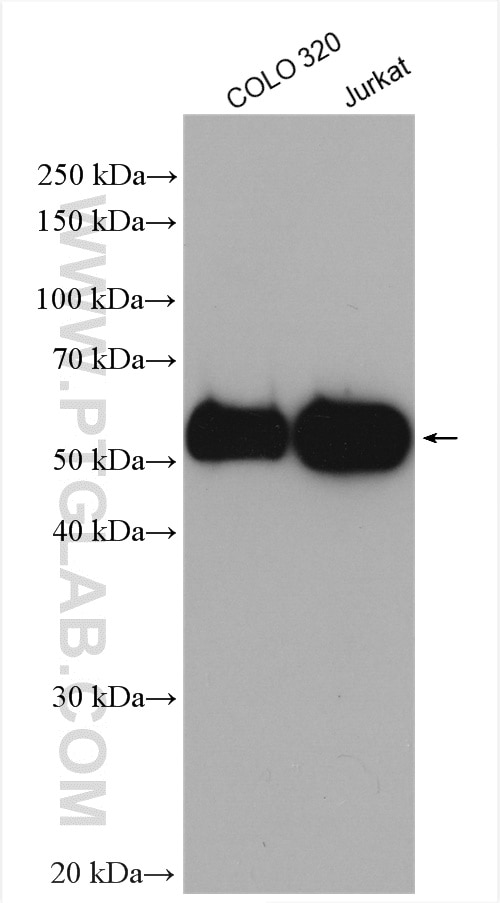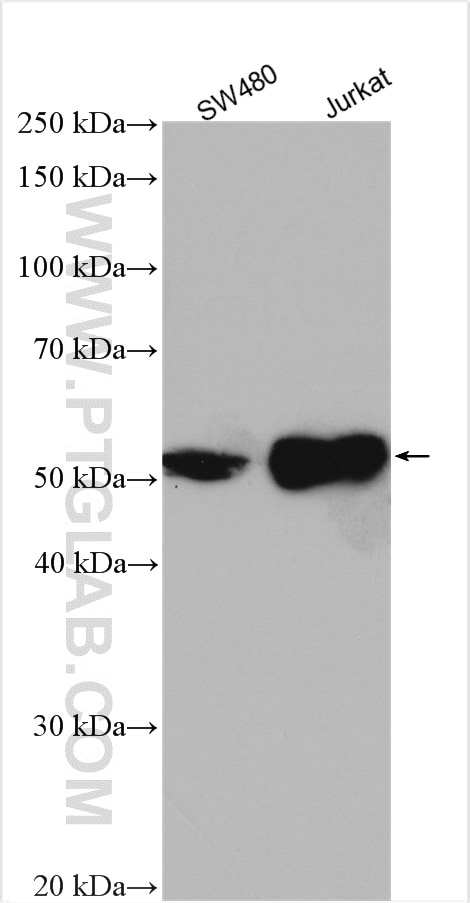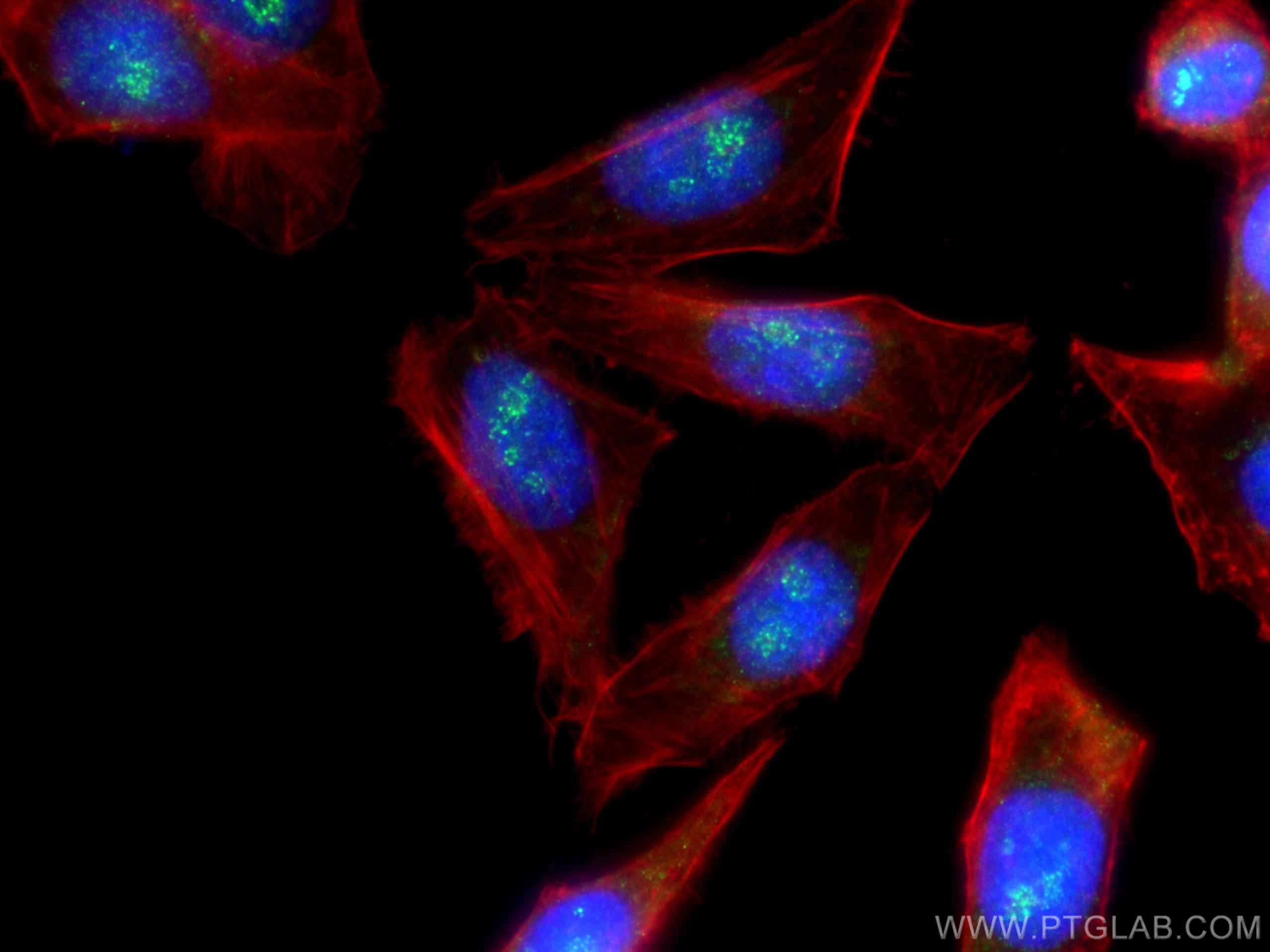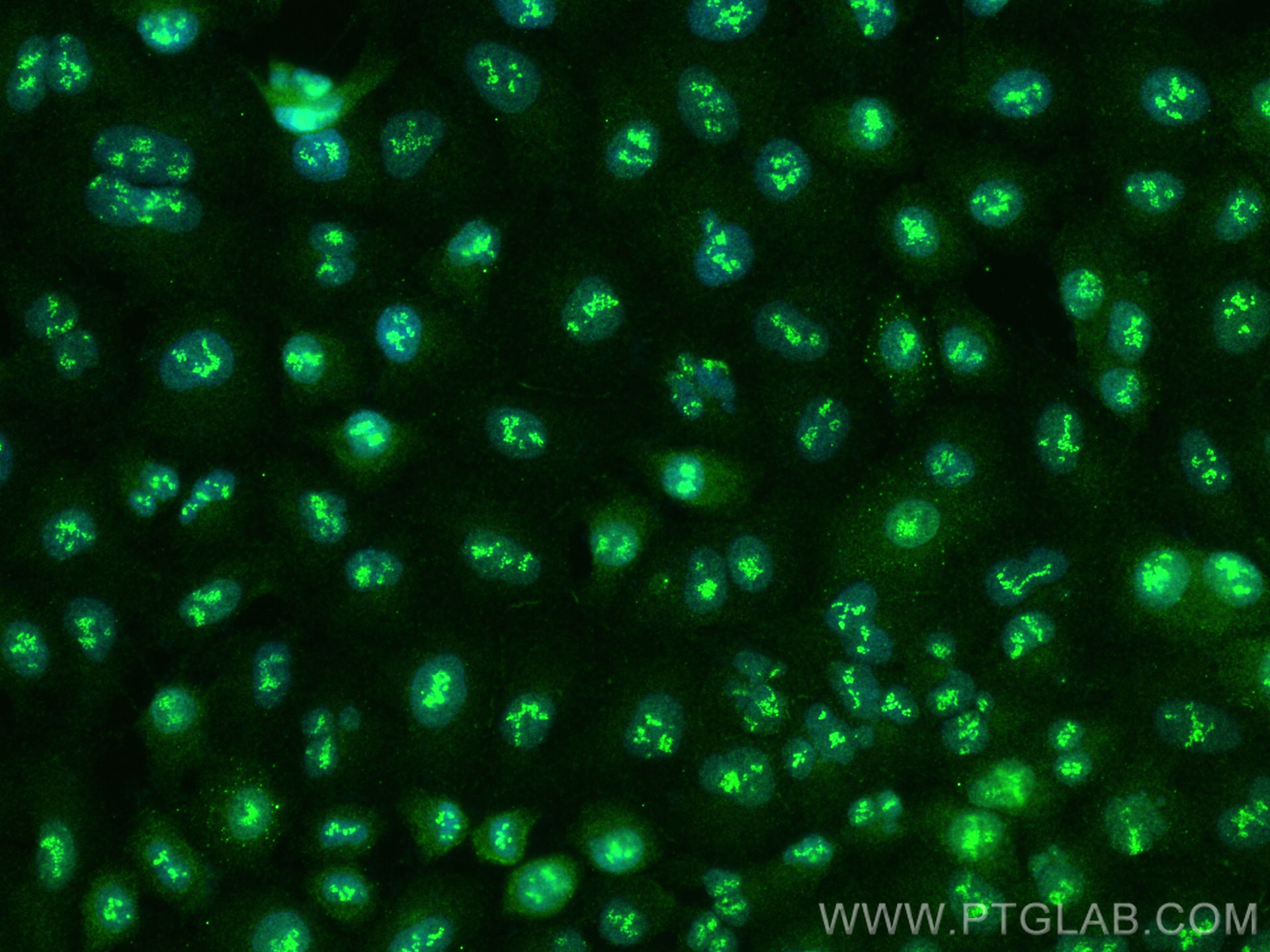Tested Applications
| Positive WB detected in | COLO 320 cells, SW480 cells, Jurkat cells |
| Positive IF/ICC detected in | HepG2 cells, A549 cells |
Recommended dilution
| Application | Dilution |
|---|---|
| Western Blot (WB) | WB : 1:5000-1:50000 |
| Immunofluorescence (IF)/ICC | IF/ICC : 1:50-1:500 |
| It is recommended that this reagent should be titrated in each testing system to obtain optimal results. | |
| Sample-dependent, Check data in validation data gallery. | |
Published Applications
| WB | See 3 publications below |
Product Information
28540-1-AP targets LEF1 in WB, IF/ICC, ELISA applications and shows reactivity with human samples.
| Tested Reactivity | human |
| Cited Reactivity | human, rat |
| Host / Isotype | Rabbit / IgG |
| Class | Polyclonal |
| Type | Antibody |
| Immunogen |
CatNo: Ag29841 Product name: Recombinant human LEF1 protein Source: e coli.-derived, PGEX-4T Tag: GST Domain: 1-98 aa of BC050632 Sequence: MPQLSGGGGGGGGDPELCATDEMIPFKDEGDPQKEKIFAEISHPEEEGDLADIKSSLVNESEIIPASNGHEVARQAQTSQEPYHDKAREHPDDGKHPD Predict reactive species |
| Full Name | lymphoid enhancer-binding factor 1 |
| Calculated Molecular Weight | 37 kDa |
| Observed Molecular Weight | 50 kDa |
| GenBank Accession Number | BC050632 |
| Gene Symbol | LEF1 |
| Gene ID (NCBI) | 51176 |
| ENSEMBL Gene ID | ENSG00000138795 |
| RRID | AB_2881166 |
| Conjugate | Unconjugated |
| Form | Liquid |
| Purification Method | Antigen affinity purification |
| UNIPROT ID | Q9UJU2 |
| Storage Buffer | PBS with 0.02% sodium azide and 50% glycerol, pH 7.3. |
| Storage Conditions | Store at -20°C. Stable for one year after shipment. Aliquoting is unnecessary for -20oC storage. 20ul sizes contain 0.1% BSA. |
Background Information
Lymphoid enhancer-binding factor 1(LEF1) belongs to a family of regulatory protein share homology with high mobility group protein-1, and it's a nuclear protein exprssed in pre-B and T cells. LEF1 has a role in the Wnt signaling pathway and hair cell differentiation and follicle morphogenesis. LEF1 exists as seven isoforms and we detects three isoforms with MW 44 kDa, 36 kDa and 23 kDa. Together with CTNNB1 and EP300, LEF1 activates transcription of target genes. Isoform 5 transcriptionally activates the fibronectin promoter, binds to and represses transcription from the E-cadherin promoter in a CTNNB1-independent manner, and is involved in reducing cellular aggregation and increasing cell migration of pancreatic cancer cells. Isoform 1 transcriptionally activates MYC and CCND1 expression and enhances proliferation of pancreatic tumor cells. MECs can give rise to seven cell types of the SAE and SMGs following severe airway injury. MECs progressively adopted a basal cell phenotype on the SAE and established lasting progenitors capable of further regeneration following reinjury. MECs activate Wnt-regulated transcription factors (Lef-1/TCF7) following injury and Lef-1 induction in cultured MECs promoted transition to a basal cell phenotype. Surprisingly, dose-dependent MEC conditional activation of Lef-1in vivopromoted self-limited airway regeneration in the absence of injury. Thus, modulating the Lef-1 transcriptional program in MEC-derived progenitors may have regenerative medicine applications for lung diseases. (https://doi.org/10.1016/j.stem.2018.03.017) The phosphorylation may affects LEF1 protein's theoretical molecular weight when tested.40-70 kD bands have also been reported (PMID:22261717;17063141 ).
Protocols
| Product Specific Protocols | |
|---|---|
| IF protocol for LEF1 antibody 28540-1-AP | Download protocol |
| WB protocol for LEF1 antibody 28540-1-AP | Download protocol |
| Standard Protocols | |
|---|---|
| Click here to view our Standard Protocols |
Publications
| Species | Application | Title |
|---|---|---|
Clin Transl Med Long noncoding RNA LINC01606 protects colon cancer cells from ferroptotic cell death and promotes stemness by SCD1-Wnt/β-catenin-TFE3 feedback loop signalling. | ||
Int J Neurosci The dynamic expression of canonical Wnt/β-catenin signalling pathway in the pathologic process of experimental autoimmune neuritis. | ||
Cancer Med Palladin promotes cancer stem cell-like properties in lung cancer by activating Wnt/Β-Catenin signaling | ||
Clin Exp Immunol Dissecting T cell heterogeneity in esophageal squamous-cell carcinoma reveal the potential role of LAIR2 in anti-tumor immunity |










